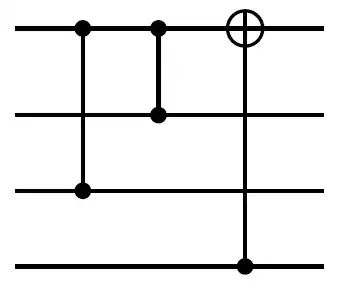Does the ability to correct $Y$ error follow from the ability to correct $X$ and $Z$ errors? I suspect, that in general the answer is no. Are there examples, then? If there are no examples, is there a proof?
2 Answers
I've understood from the comments that the OP is willing to consider a more general error set, rather than focussing specifically on the more standard case of distance being a measure of the number of single-qubit errors that can be tolerated. In that context, the following construction may be of assistance:
Consider a standard distance 5 CSS code, $C$. This code can correct an error $X_1Z_2Z_3$ or an error $Z_1Z_4$ because CSS codes are independently distance 5 on the two X/Z types. On the other hand, the product of the two errors is $Y_1Z_2Z_3Z_4$, which contains 4 $Z$ errors. So, the code will not be able to correct this error (or, at least, there surely exist codes that do not correct this error).
Next, let's introduce a unitary $U$ such that \begin{align*} U(X_1Z_2Z_3)U^\dagger&=X_1 \\ U(Z_1Z_4)U^\dagger&=Z_1 \end{align*} Defining a new code $C'$ as $UCU^\dagger$ (please allow the abuse of notation; I hope it's clear what I mean), it must be able to correct errors $X_1$ and $Z_1$. However, it will not be able to correct the product error $$U(Y_1Z_2Z_3Z_4)U^\dagger=U(X_1Z_2Z_3)U^\dagger U(Z_1Z_4)U^\dagger=Y_1.$$
Does such a $U$ exist? Yes
Note that, throughout, I've been lazy about imaginary numbers appearing, and have instead written $XZ=Y$. This makes no difference to what we're after.
- 62,671
- 4
- 55
- 140
They can be detected if a sign and bit flip are detected. A Y-error is the simultaneous occurrence of X and Z errors. As $ZX=iY$.
- 2,426
- 4
- 25
